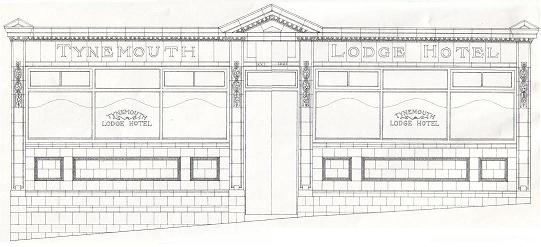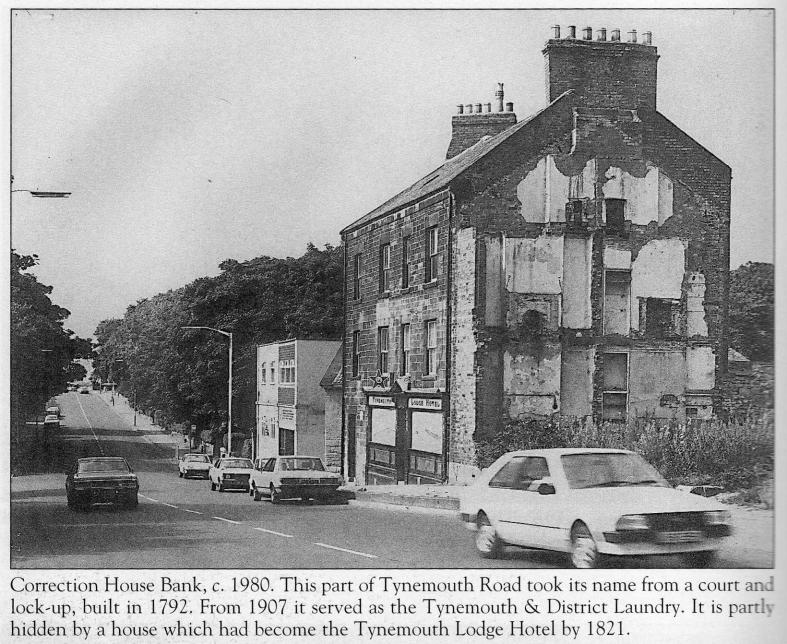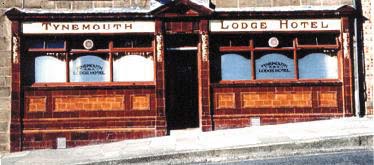The Tynemouth Lodge Hotel has been trading as a public house since 1799. It is situated next door to the former House of Correction and Justices Room in the Parish of Tynemouth (formerly in Northumberland and latterly in the county of Tyne & Wear). The House of Correction was a place of punishment and reform of poor persons convicted of minor offences through hard labour, such as prostitutes and petty thieves, as more serious offenders were sent to the county gaol in Morpeth, where hangings also took place.
In the 1891 census, the landlord of the Tynemouth Lodge Hotel was John Rutherford, aged 56, along with his wife Hannah, aged 60, plus two servants. At that time they also had eleven guests staying, Robert and Marie Clifford who was the manager and proprietress of a Spanish Choir, along with their choir of nine teenage girls, not one of whom was Spanish.
John Rutherford was born in Hawick in 1835, he joined Newcastle Police Force as a young man and later became Chief Warder at Newcastle Gaol, then Master of Berwick on Tweed Workhouse before becoming landlord of the Tynemouth Lodge Hotel.
Hannah Rutherford died in 1891 and John moved on to running the Beehive Inn in North Shields and from there his life went downhill. He had an unsuccessful marriage to a barmaid and in 1898 he was charged with his wife’s murder.
So John Rutherford, former Police Officer, gaoler, workhouse master, deliverer of food from the Tynemouth Lodge to prisoners next door in the Correction House became a prisoner himself in Newcastle Gaol, where he served 3 years penal servitude.
Circuit judges regularly stayed at the Tynemouth Lodge whilst engaged in their periodical duties in the Justices Room, which was the local courthouse. Hundreds of Houses of Correction were built in England during the eighteenth century by order of an act of Parliament. London contained the first House of Correction, Bridewell.
The Correction House next to the Tynemouth Lodge Hotel is one of just a few left standing, and was made into a Grade II listed building in 1999, and although there have been some modern extensions added to the building, the old structure is still intact.
However, about 10 years later this building was de-listed by English Heritage and no reason whatsoever was given to either the owner of the local council for this move.
The beer garden of the Tynemouth Lodge is situated to the rear of the Correction House on the fringe of Northumberland Park. The land on which the the Tynemouth Lodge and the Correction House were built was formerly known as Powebank near to Lowlight Farm (there is still a Low Lights Tavern next to the nearby Fish Quay).
It was decreed at the Christmas Sessions at Morpeth on the 13th day of January 1789 that a House of Correction was needed at North Shields. Thomas Fenwick and Thomas Bigge were authorised to find a place. They reported at the Easter Sessions that they had found a site belonging to John Walker of Dockwray Square, and were instructed to come to an agreement, not exceeding £45. The Correction House was duly built and ten years later the Tynemouth Lodge Hotel was built for a Mr. William Hopper, who ran the hotel for many years.
For most of the twentieth century the former Correction House was a laundry.
The tiled frontage on the Tynemouth Lodge was added in about 1880, at which time this type of decorative ‘faience tiling’ was fashionable on pubs and in some cases pubs were tiled on the inside as well.
The Tynemouth Lodge was bought by the current owner in 1983 from Scottish and Newcastle Breweries. It had been allowed to fall into disrepair and had been closed for a few months, being threatened with demolition. At time of closure the pub had been a brewery tenancy, selling no real ales.
The correct year in which the Tynemouth Lodge Hotel opened was 1799, in which year the Prime Minister was William Pitt the Younger, who introduced Income Tax of two shillings (10p) in the pound to raise funds for Great Britain’s war effort in the French Revolutionary Wars.
In July 1799 Parliament passed The Combination Act to outlaw trade unions.
And in the year that the Tynemouth Lodge opened, England was at war with Spain (1796-1808).
The current owner, Hugh Price, who was a founder member of the Tyneside Branch of the Campaign for Real Ale, set about restoring the old building and opened on 22nd December 1983 as a free house, specialising in traditional real ale. He acquired land at the side of the pub for car parking and later bought the old Correction House next door. This small bar now boasts the highest sales of Draught Bass on Tyneside, alongside traditional ales from Hadrian Border Brewery, Black Sheep Brewery plus local guest beers. Our real ale policy at the Tynemouth Lodge is to offer a limited range of fast-selling house beers, for an altogether fresher pint of beer.
HAUNTED :
In the past 30 years the ghost of a lady chasing young children has been seen by two successive tenants of a flat on the first floor of the pub. She was wearing a bonnet, about 30 years of age, dressed in Georgian style clothing … and the children appeared to be extremely happy. On both occasions, neither of the witnesses was in a state of inebriation and on both occasions it happened in the early hours of the morning.




